Nature has always been a powerful source of inspiration, with inventors diving into the world around them for new ideas. From the anatomy of animals to the behavior of plants, some of our most incredible creations—like wetsuits and solar panels—are based on our planet’s genius designs. If we want to build a more sustainable and efficient future, we need to pay attention to the principles that shape our environment. To give you a glimpse of how amazing this connection can be, here’s a list of man-made objects that fit the bill.This post may includeaffiliate links.
Nature has always been a powerful source of inspiration, with inventors diving into the world around them for new ideas. From the anatomy of animals to the behavior of plants, some of our most incredible creations—like wetsuits and solar panels—are based on our planet’s genius designs. If we want to build a more sustainable and efficient future, we need to pay attention to the principles that shape our environment. To give you a glimpse of how amazing this connection can be, here’s a list of man-made objects that fit the bill.
This post may includeaffiliate links.
Every day, hundreds of birds die from flying into glass windows. This doesn’t just affect birds but also poses a risk to property owners. To reduce such accidents, a company called Ornilux created bird-safe glass. They imitated the strands of a spider web, which are visible to birds, unlike the case with transparent glass. The bird-safe glass features crisscross UV patterns.
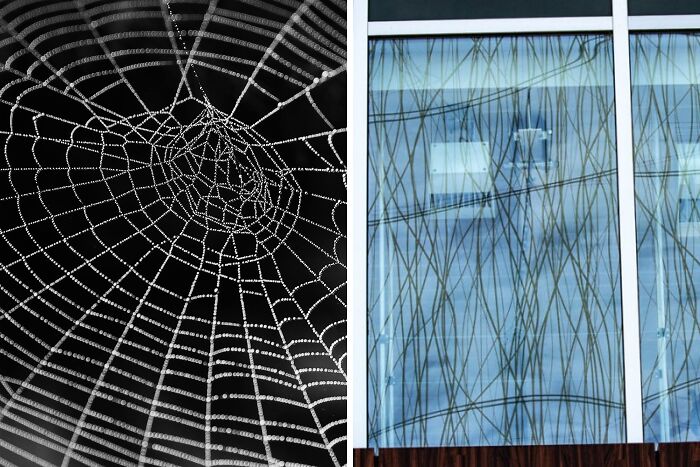
RELATED:
Is the termite a pest or a muse? It depends on who you ask. While many people view termites as unwanted houseguests, at least one architect is looking to the ingenious self-cooling designs of termite mounds for inspiration. Zimbabwean architect Mick Pearce observed a termite mound on a golf course and noted its shape and ventilation seemed ideally suited to the environment. He incorporated the termite mound design into buildings in Harare, Zimbabwe, and Melbourne, Australia. In each structure, cool air near the ground is channeled upward and hot air at the top of the building is emitted through chimneys.

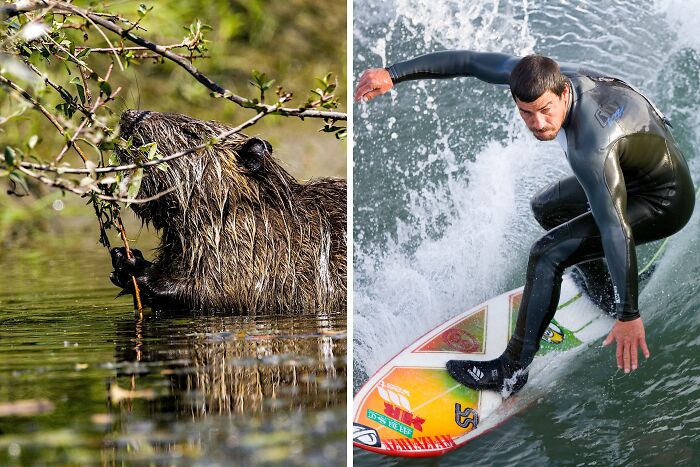
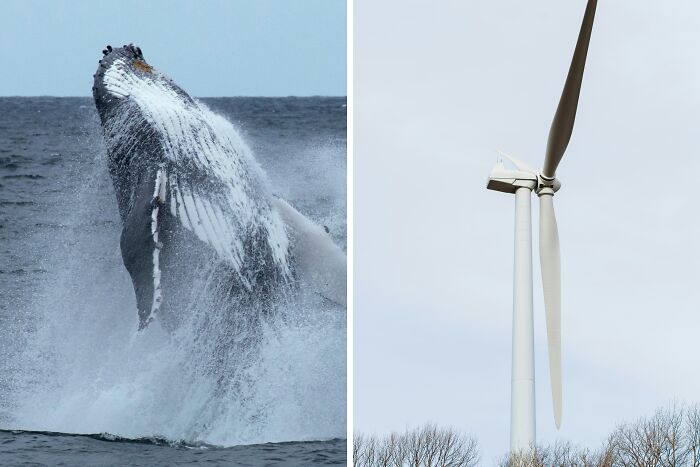
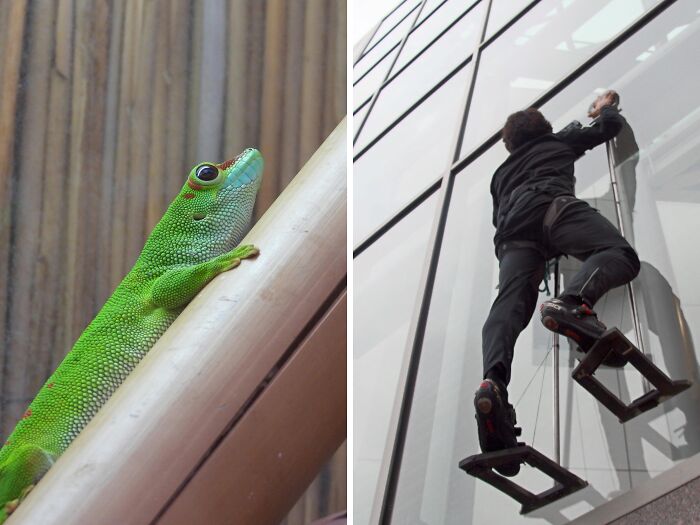
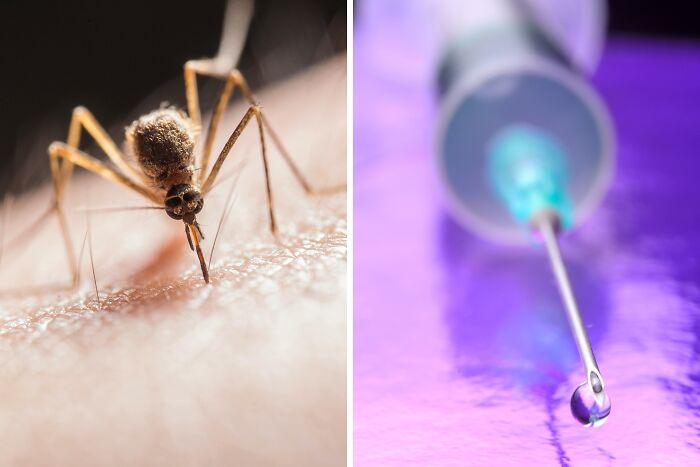
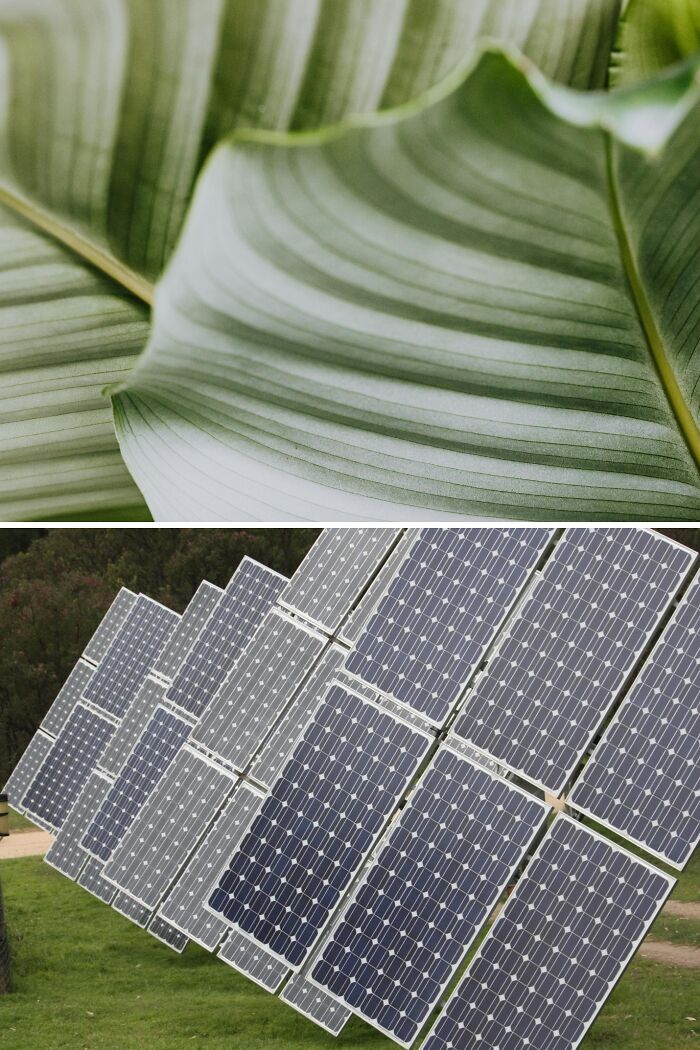
Lotus plants are known for their aquatic beauty and as a symbol of longevity in some cultures, but you probably didn’t know that they’re also superhydrophobic. The surface of the lotus plant’s leaves repels dirt and water so well that this self-cleaning quality was dubbed the “lotus effect” in 1977.In 1999, the German building company Sto released an outdoor paint called Lotusan. When dried, the paint’s microtexture mimics the surface of the lotus leaf to repel moisture and dirt from exteriors.
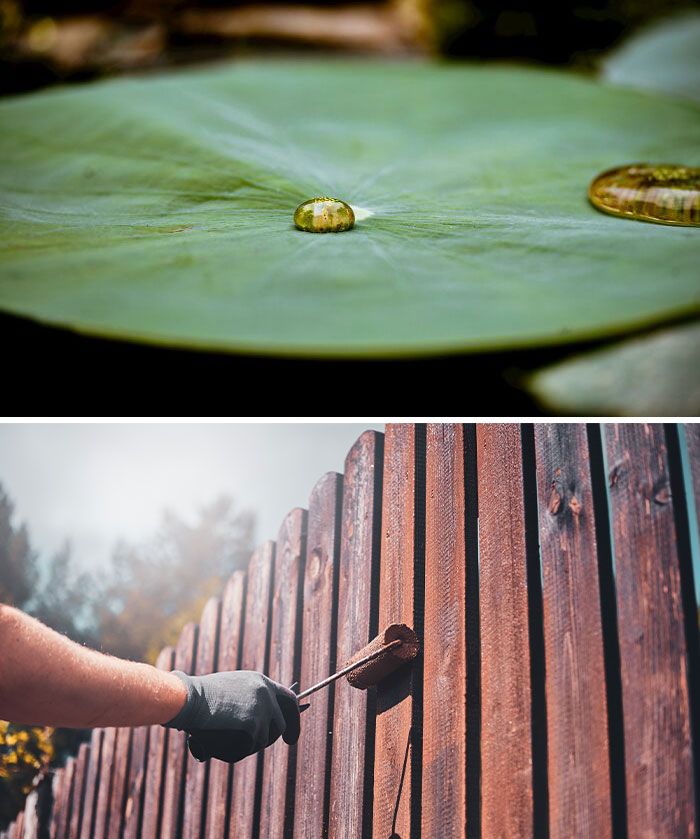
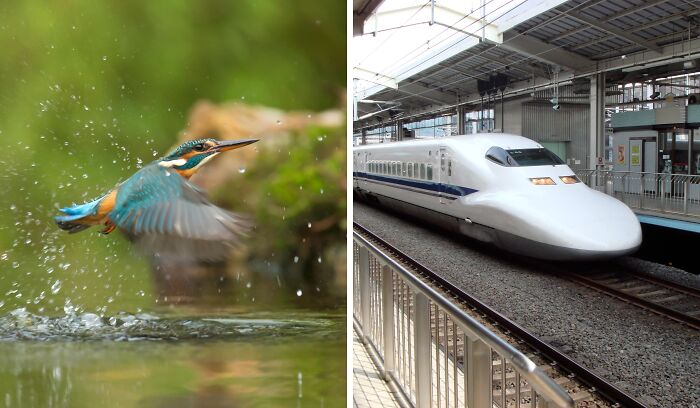
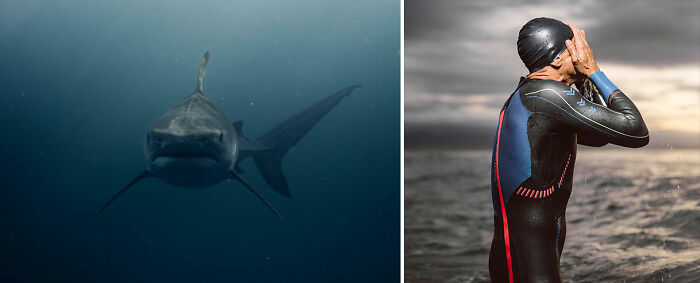
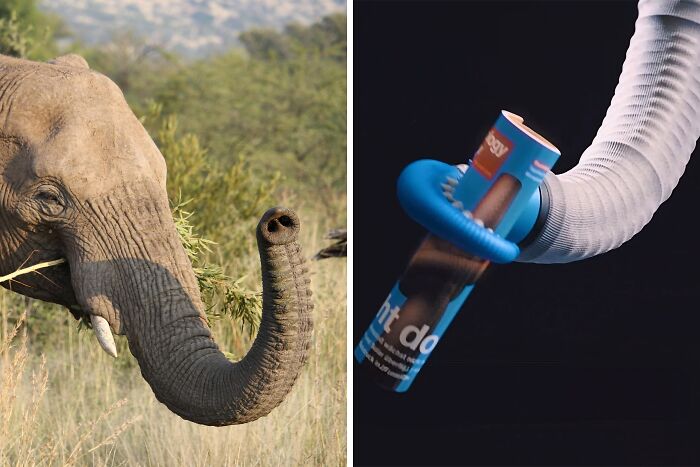
The albatross is a majestic, ocean-faring bird that truly soars, meaning it rarely flaps its wings to fly. Instead, it uses the wind to fly more than 600 miles a day. Researchers at MIT are using this flight design to develop drones. They’re hoping to create a fixed-wing, wind-propelled drone that would be able to fly overseas without stopping.
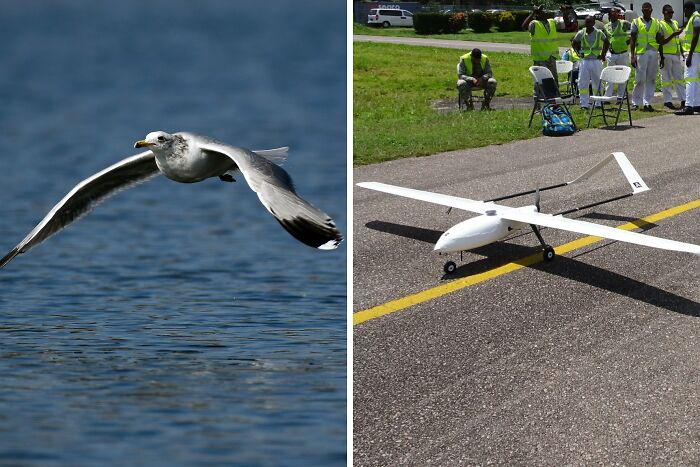
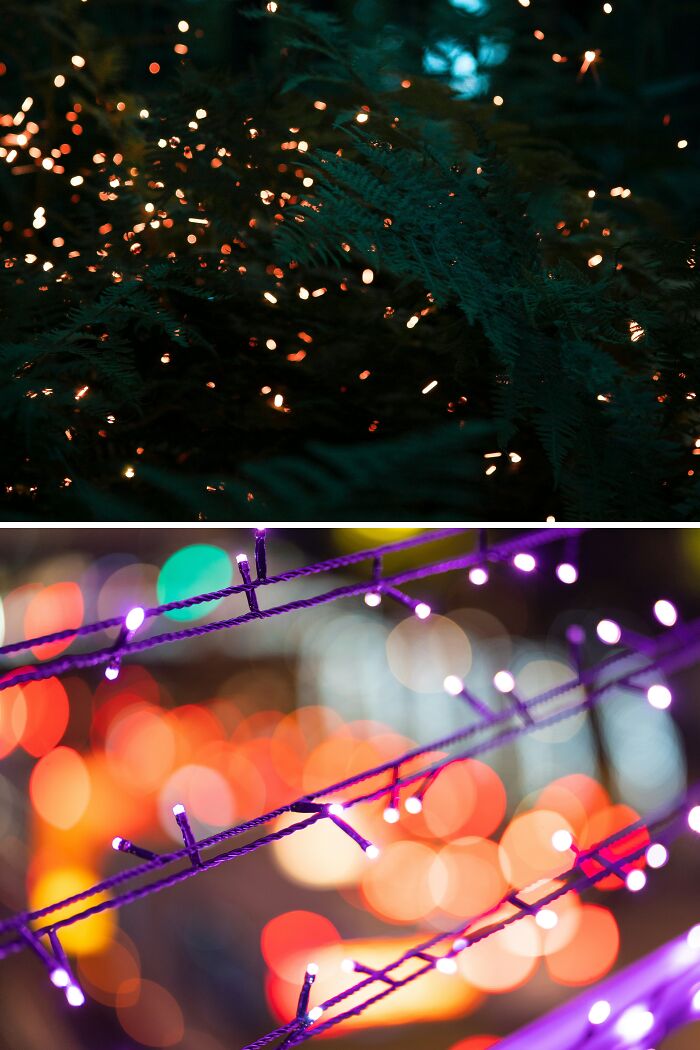
Camels make the list again! Bridgestone is developing a special type of tire that mimics the two-lobed toes of camels. The tire, which was introduced at this year’s Consumer Electronics Show, is comprised of two lobes of braided steel and is designed to be able to easily trek over hills of fine-grained, abrasive lunar dust. Tests in a simulated lunar environments will soon confirm whether camels will be just as helpful on the moon as they are on Earth.
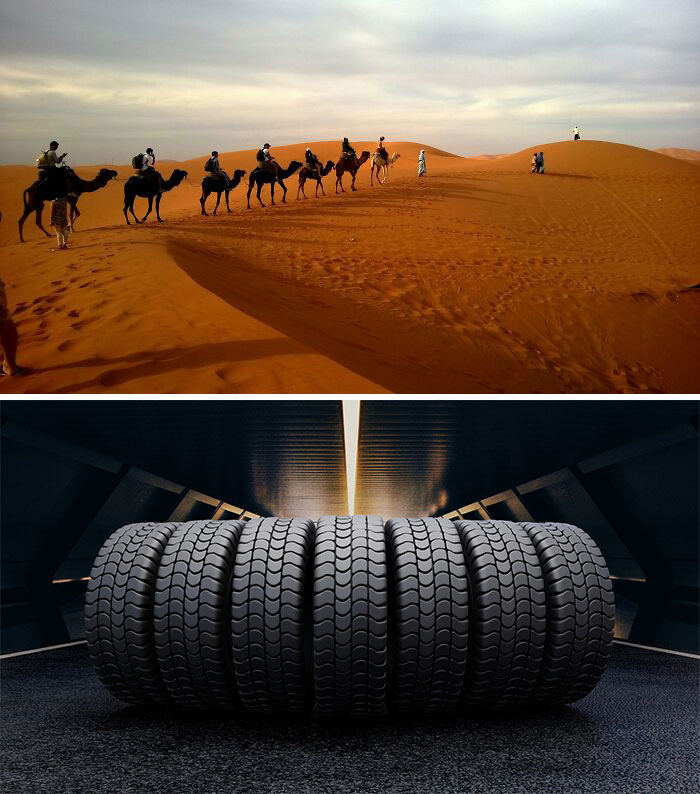
Pit vipers can detect their prey in complete darkness using specialized sensory organs that perceive infrared radiation. This ability inspired the development of thermal imaging cameras.
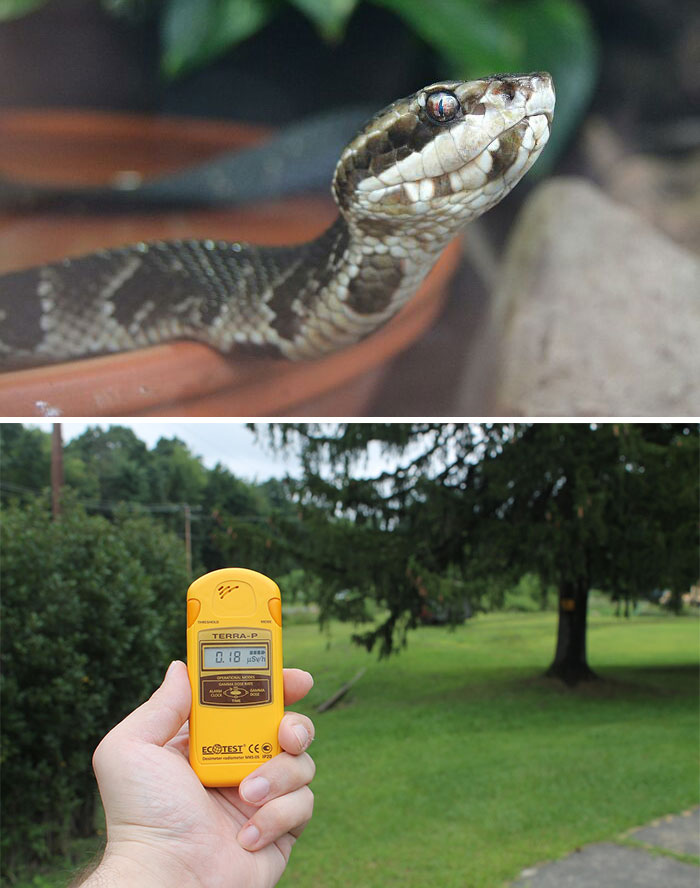
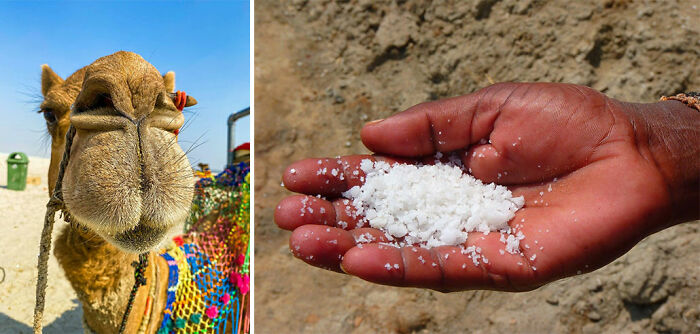
Venous leg ulcers in humans is a kind of an ulcer, due to abnormal vein function in the legs. The common causes for the disease include blood clots, injury, inheritance, ageing, lack of physical activity and obesity. Medical officials suggest compression therapy for diagnosis; the idea being stolen from Giraffe.Giraffe is one of the tallest animals in the world, which also means their blood has to circulate a lot of area through long legs. To clear it up, the distance between a giraffe’s heart and feet is twice that of humans. And they also have smaller calf muscles, no moving toes and minimal ankle joint movement. Yet, they don’t suffer from edema due to it’s extremely tough, fibrous and non-elastic skin. The skin of giraffe creates a rigid sleeve that optimizes the venous return.Scientists derived this aspect into the medical field as compression therapy for the cure of the same.
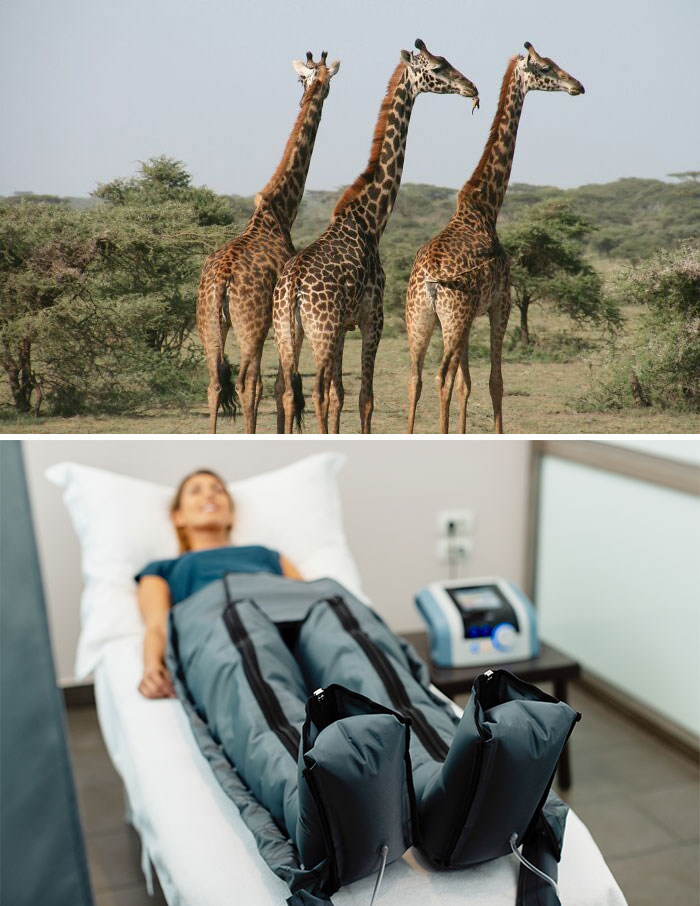
See Also on Bored Panda
These underwater mollusks have inspired scientists to make one of the strongest adhesives on the market. Researchers have cracked how mussels attach to wet surfaces, and have replicated it into an adhesive for commercial use. They created a biomimetic polymer model that contains proteins with the amino acid DOPA, which provides the glue’s adhesion. In a study published in the journal ACS Applied Materials and Interfaces, scientists found that the glue performed 10 times better than other commercial adhesives when used to bond polished aluminum.
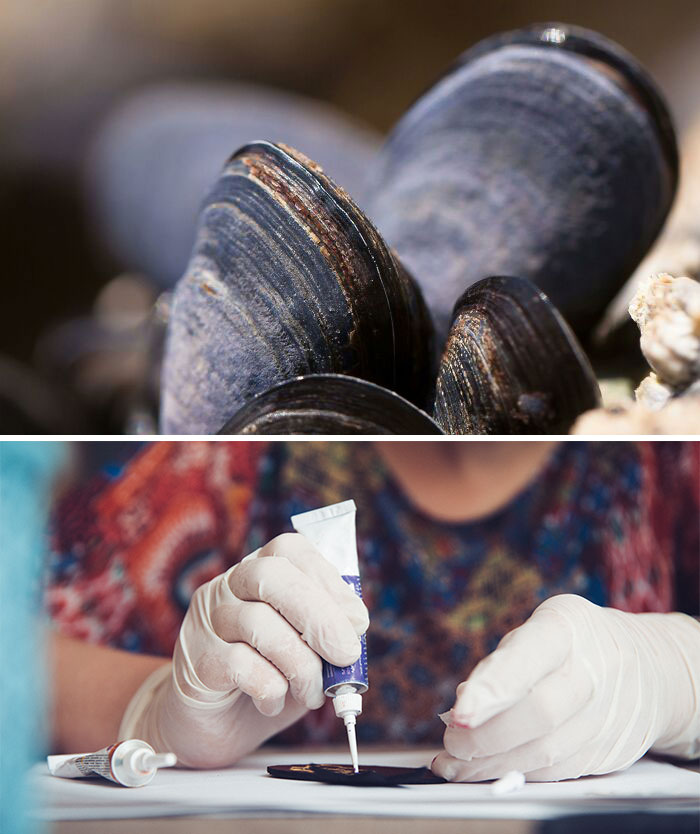
The quest for sustainable building materials has led us to nature’s treasure trove of solutions.From bio-inspired concrete that heals itself like living organisms to biodegradable alternatives that reduce waste, examples of biomimicry in sustainable building materials are reshaping the construction industry.These innovations not only minimize environmental impact but also enhance the resilience and longevity of our built environment.
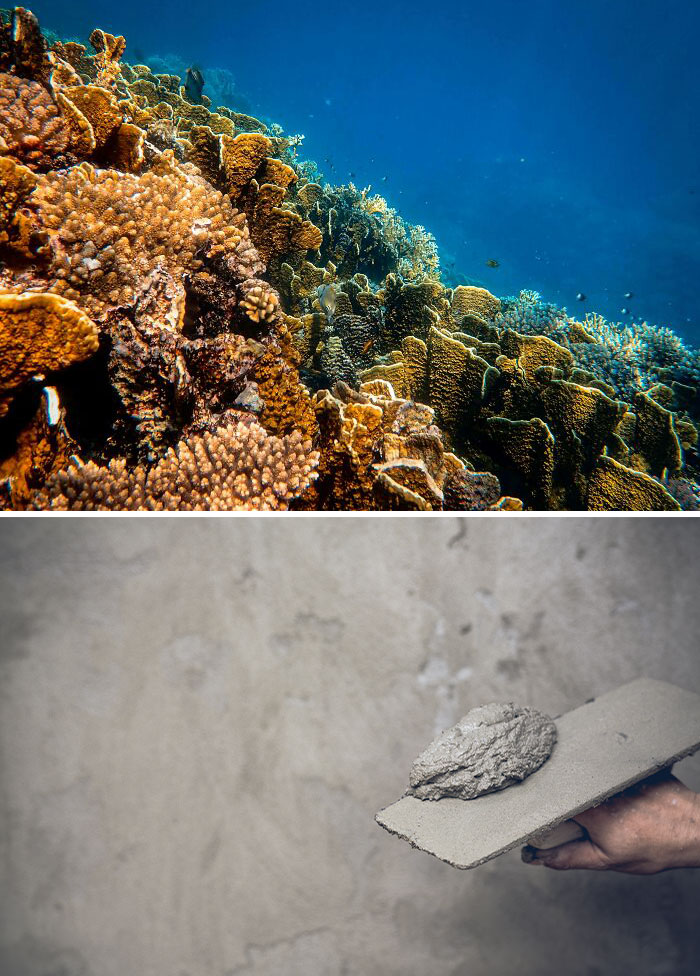
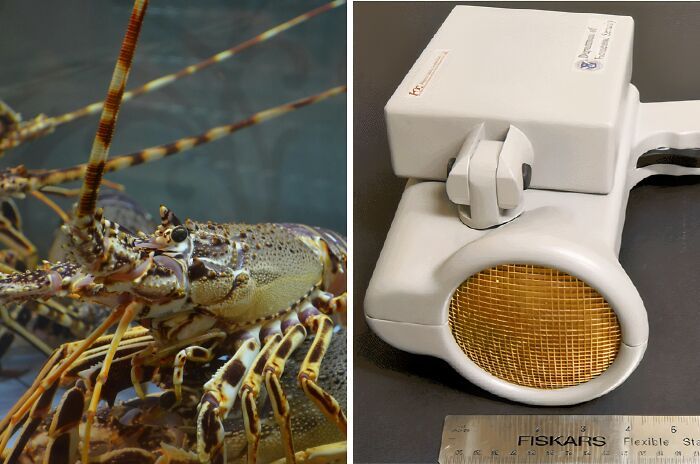
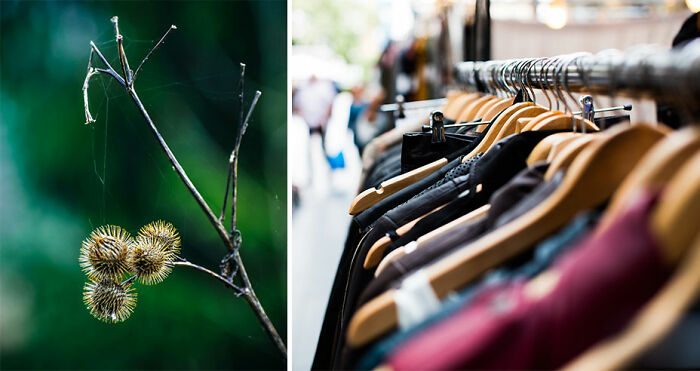

The curved surface of the human eye facilitates a wider field of view than has ever been possible using a camera. The challenge for engineers was to transfer microelectronic components onto a curved surface without breaking them. Yonggang Huang of Northwestern University and John Rogers of the University of Illinois built a digital camera of the same size, shape and layout of the human eye, and developed a mesh-like material that hold electronic components onto the curved surface. This technology would enable photographs that are entirely clear and focused, unlike today’s cameras which can focus only on certain areas.It may even enable the development of an artificial retina or bionic eye.
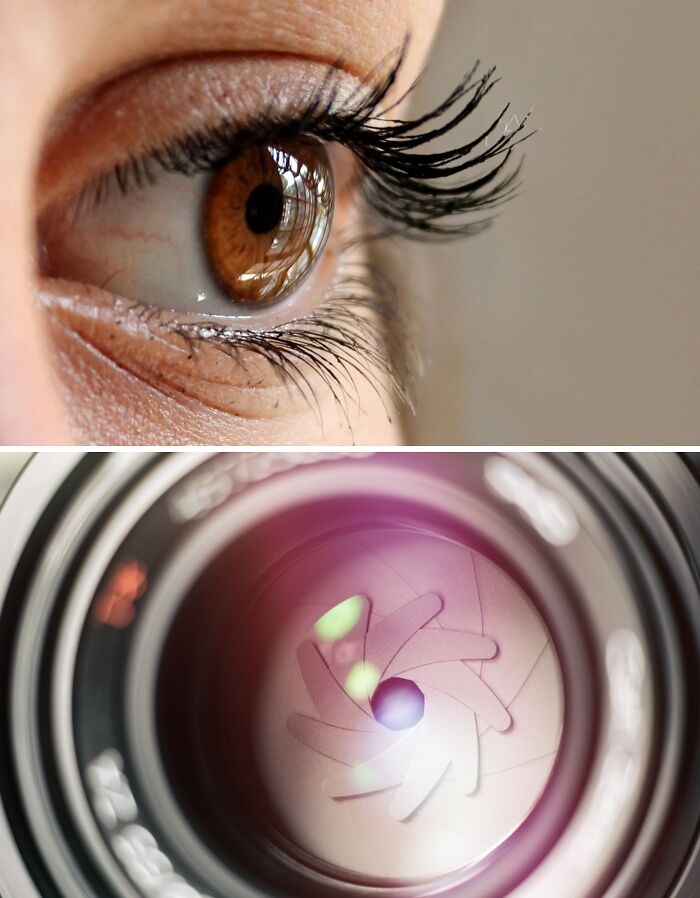
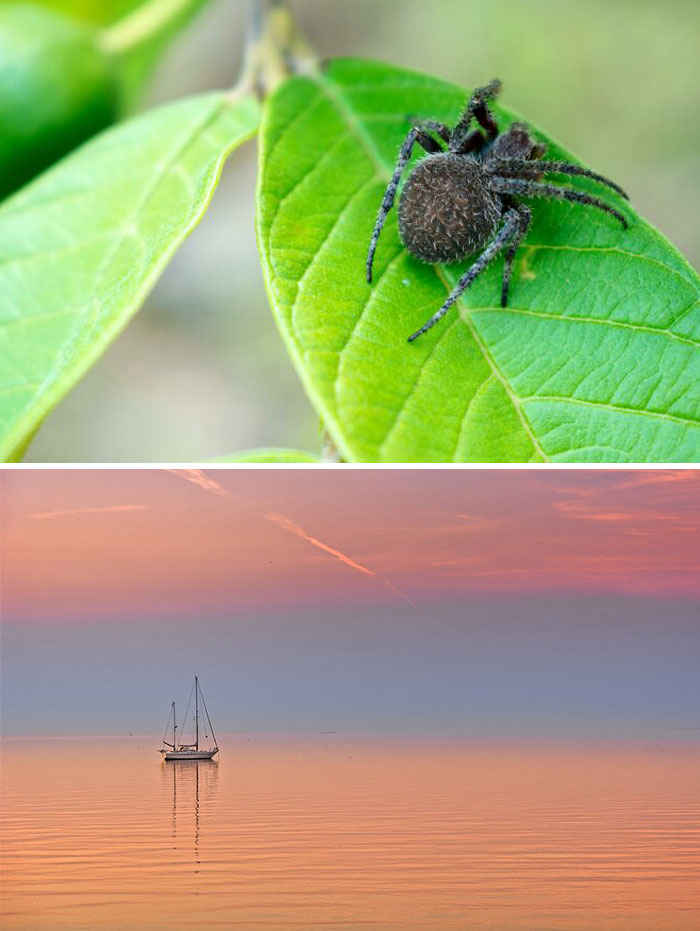
Ducks swim in water with the help of webbed feet. Studying the ducks’ webbed feet, inventors were able to come up with the idea of flippers and fins. So order to dive in the sea, divers use flippers to push themselves to move forward. These flippers serve as oars used in boats for movements. Flippers and oars help divers and boat riders to change their direction in water which improves efficiency with less oxygen consumption.
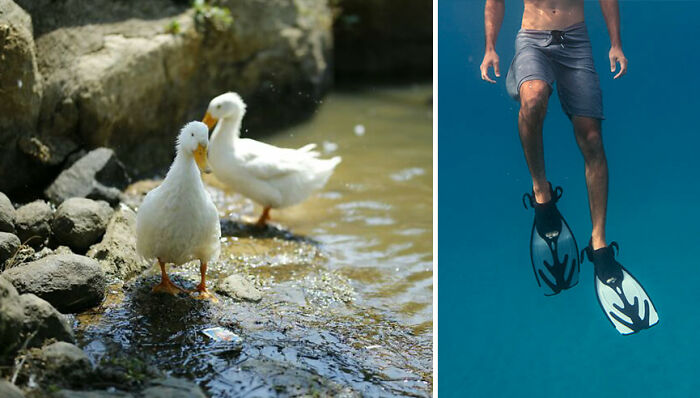
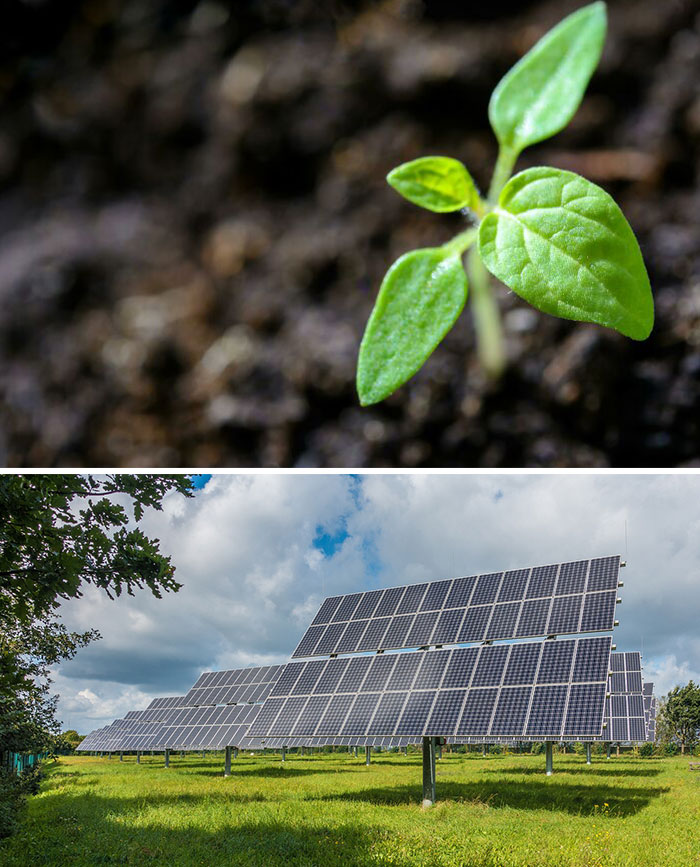
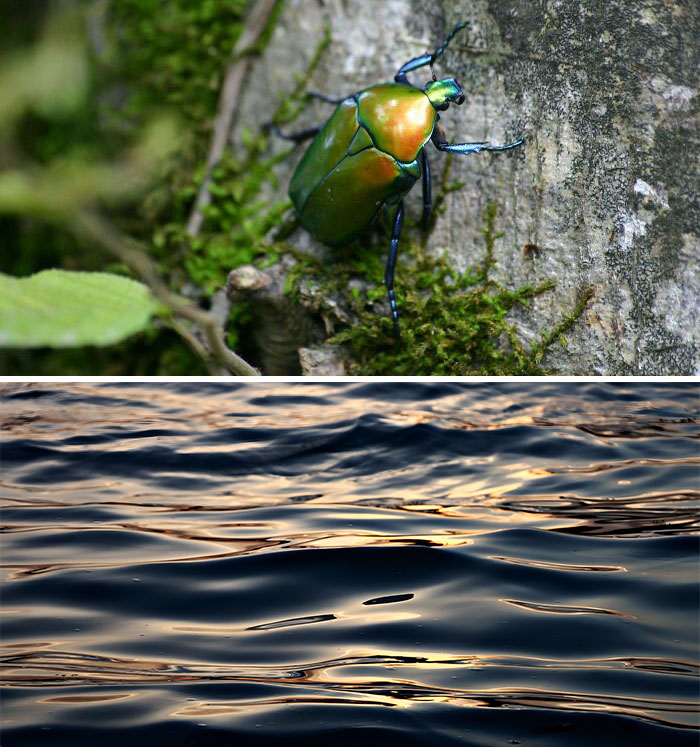
Humans adopted camouflage—a survival tactic for species ranging from the chameleon to the polar bear—as our own defense mechanism, most notably in the military and for hunters.Camouflage works due to its ability to hide the contour, or outline, of the body, because the human eye has a limited capacity to distinguish color patterns from far away.
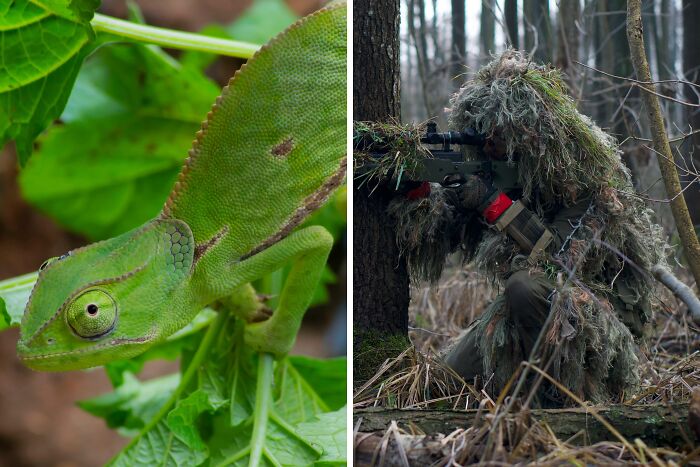
Counterfeit money is being busted thanks to butterflies. A project called NOtES, from researchers at Simon Fraser University, studied butterfly wings and their iridescence of the Costa Rican morpho butterfly. They created a technology using nanoscale light-interfering structures to create an anti-counterfeiting stamp. It’s more difficult to crack than a hologram and can be “printed” not only on bank notes, but on a whole range of other objects, too.
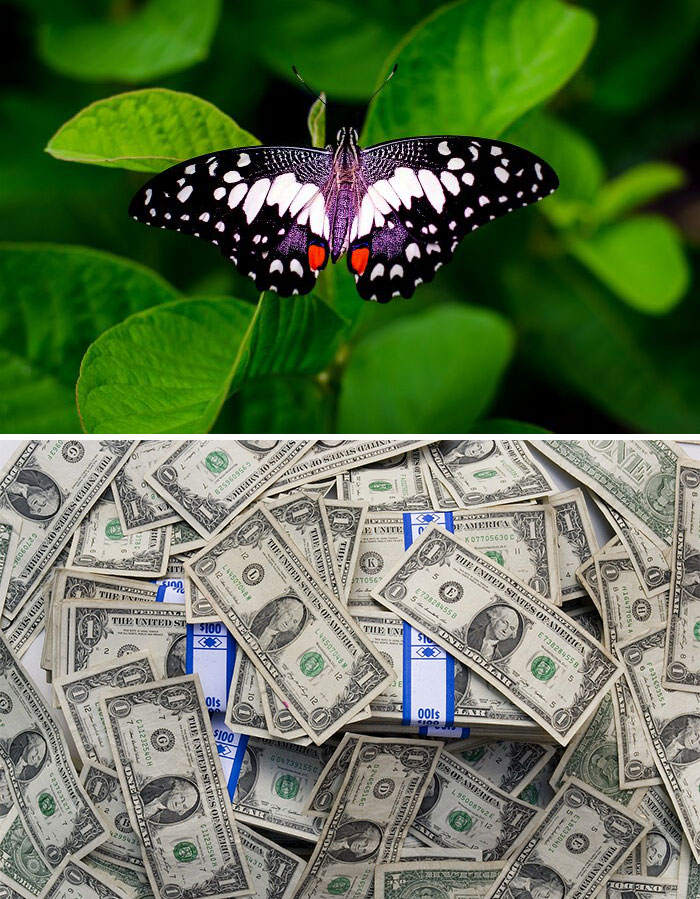
Studying the whales, scientists came up with an idea to invent the submarine, so as to sail under the vast oceans. The design of the submarines is based on the shape of whales. And like whales, submarines also their sonar system to trace food and avoid hurdles. This ability of measuring distances of targets has also been built in submarine to manoeuvre movements under water.Whales can stay for long period of time in water and submarines also have this ability.
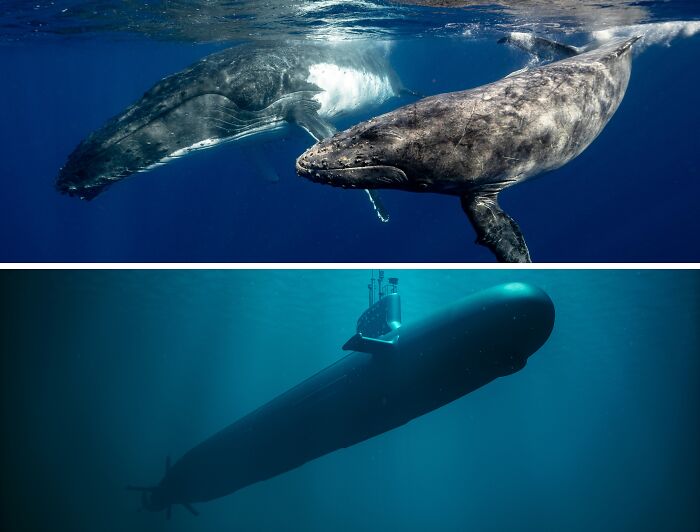
Modal closeAdd New ImageModal closeAdd Your Photo To This ListPlease use high-res photos without watermarksOoops! Your image is too large, maximum file size is 8 MB.Not your original work?Add sourcePublish
Modal close
Add New ImageModal closeAdd Your Photo To This ListPlease use high-res photos without watermarksOoops! Your image is too large, maximum file size is 8 MB.Not your original work?Add sourcePublish
Modal closeAdd Your Photo To This ListPlease use high-res photos without watermarksOoops! Your image is too large, maximum file size is 8 MB.Not your original work?Add sourcePublish
Add Your Photo To This ListPlease use high-res photos without watermarksOoops! Your image is too large, maximum file size is 8 MB.
Add Your Photo To This List
Please use high-res photos without watermarks
Ooops! Your image is too large, maximum file size is 8 MB.
Not your original work?Add source
Modal closeModal closeOoops! Your image is too large, maximum file size is 8 MB.UploadUploadError occurred when generating embed. Please check link and try again.TwitterRender conversationUse html versionGenerate not embedded versionAdd watermarkInstagramShow Image OnlyHide CaptionCropAdd watermarkFacebookShow Image OnlyAdd watermarkChangeSourceTitleUpdateAdd Image
Modal closeOoops! Your image is too large, maximum file size is 8 MB.UploadUploadError occurred when generating embed. Please check link and try again.TwitterRender conversationUse html versionGenerate not embedded versionAdd watermarkInstagramShow Image OnlyHide CaptionCropAdd watermarkFacebookShow Image OnlyAdd watermarkChangeSourceTitleUpdateAdd Image
Upload
UploadError occurred when generating embed. Please check link and try again.TwitterRender conversationUse html versionGenerate not embedded versionAdd watermarkInstagramShow Image OnlyHide CaptionCropAdd watermarkFacebookShow Image OnlyAdd watermark
Error occurred when generating embed. Please check link and try again.
TwitterRender conversationUse html versionGenerate not embedded versionAdd watermark
InstagramShow Image OnlyHide CaptionCropAdd watermark
FacebookShow Image OnlyAdd watermark
ChangeSourceTitle
You May Like“Nature Is Freaking Lit”: 50 Pics To Prove That Nature Never Ceases To Amaze (New Pics)Greta Jaruševičiūtė50 Stunning Examples Of Nature Reclaiming What Humans Left Behind (New Pics)Eglė Bliabaitė
Greta Jaruševičiūtė
Eglė Bliabaitė
Curiosities